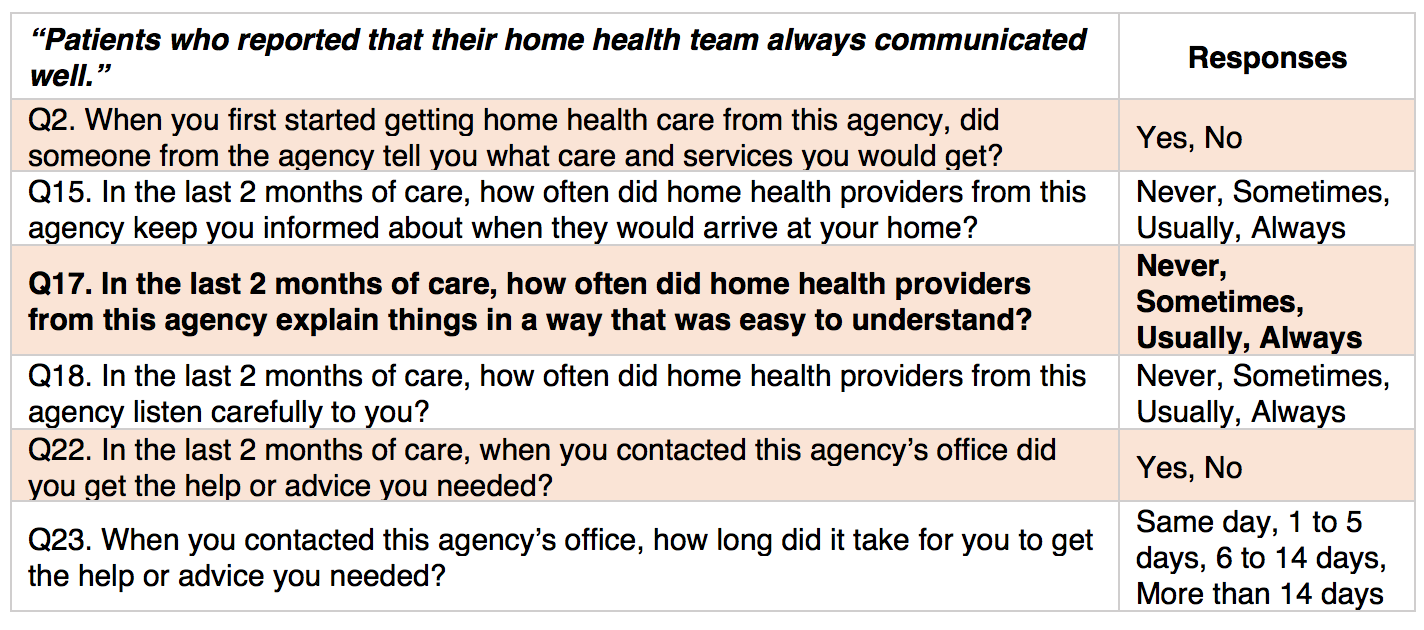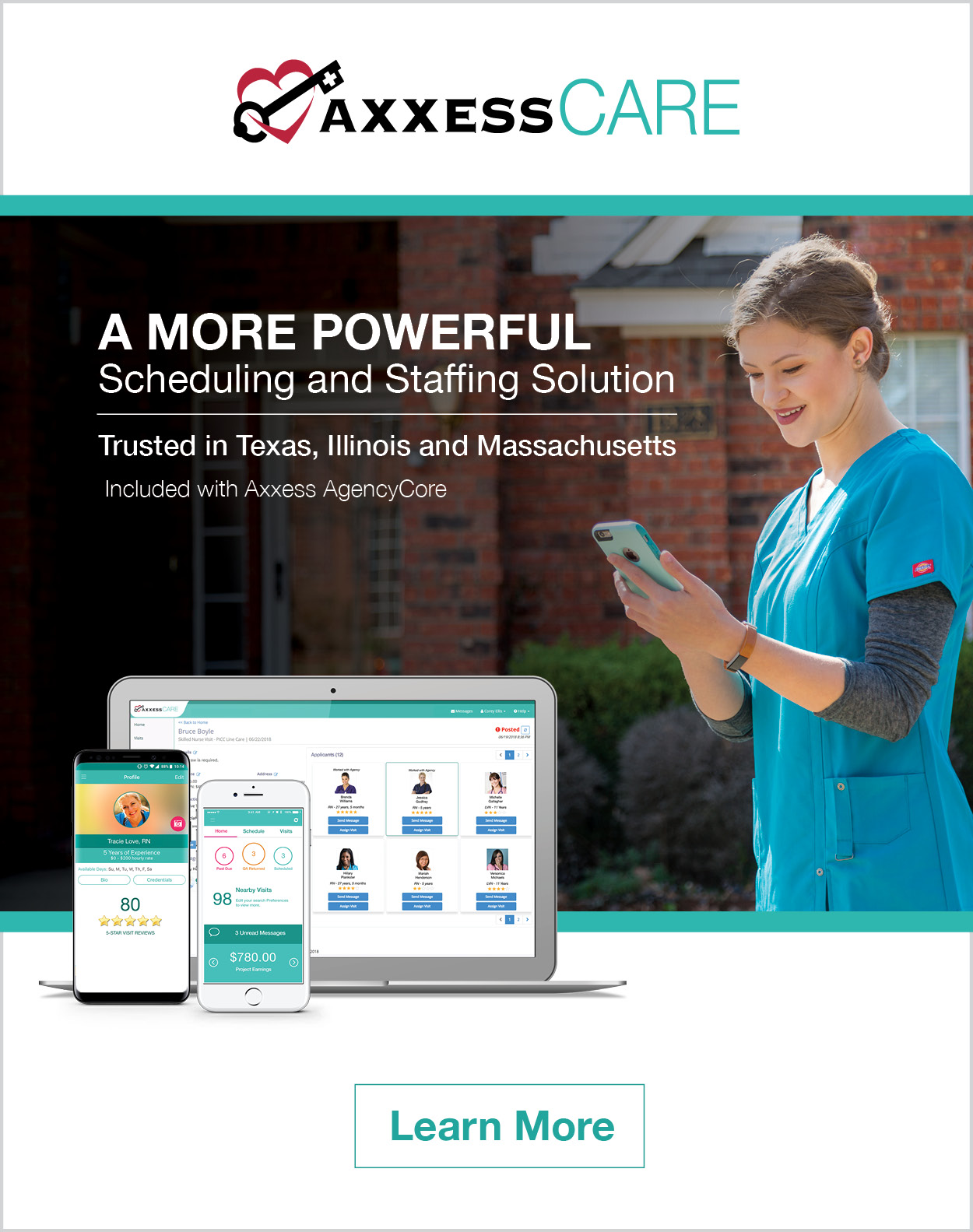The Home Health Consumer Assessment of Healthcare Providers and Systems (HHCAHPS) patient engagement survey impacts the bottom line of home health agencies substantially by attracting referral sources and value-based reimbursement. It is imperative for organizations to understand the HHCAHPS survey, and work on improving each measure to maximize long-term growth and sustainability.
Ensuring Patient Comprehension – Question 17
Question 17 is one of six questions included in the Home Health CAHPS survey Communications domain, designed to assess how effectively healthcare providers communicate with patients about their treatment plans.
Communications Between Providers and Patients
This question seeks to assess how frequently home healthcare providers communicated in a manner that patients perceived to be easily understandable.
Suggestions for Communications Improvement
- Thoroughly orient the patient, at the Start of Care and throughout the care episode, to services provided by the home health organization, the treatment goals, and course of treatment for the patient’s diagnosis.
- Educate agency staff on appropriate methodologies and best practices for educating patients, such as requesting patient teach-back.
- Use teaching aids liberally.
Patient comprehension is essential to establish productive patient-provider communication. Healthcare providers should employ patient-centered communication behaviors to facilitate understanding (e.g., encouraging patients to ask questions about their healthcare, requesting that patients repeat healthcare instructions as they are given (teach-back method), and maintaining an acute awareness of non-verbal communication from patients).
Patients may not always verbalize confusion or ask questions, so healthcare providers must continuously refine their communication and interpersonal skills, and remain attuned to their patients. Further, evaluating the mental status of the patient through assessment and observation is an essential aspect of tailoring patient teaching to elicit comprehension. In circumstances where the patient’s cognitive functioning is altered, caregivers and family members who are involved in the patient’s care become important partners in all communications, and may be the individuals responding to patient experience surveys.
An article published by the Association of American Medical Colleges discusses the importance of health practitioner communication proficiency and emphasizes “health literacy,” which is defined by the Affordable Care Act as patients’ ability “to obtain, communicate, process, and understand basic health information and services to make appropriate health decisions.”
The U.S. Department of Education estimates that only 12 percent of adults possess health literacy proficiency, and related research initiatives maintain that a sweeping percentage of adults lack the skills needed to manage the demands and complexities of our healthcare systems. It is therefore the responsibility of healthcare professionals and organizations to ensure patients’ comprehension of healthcare.
The Agency for Healthcare Research and Quality (AHRQ) has constructed a Health Literacy Universal Precautions Toolkit, to help “reduce the complexity of health care, increase patient understanding of health information, and enhance support for patients of all health literacy levels.” The AHRQ Toolkit offers an abundance of educational resources to improve verbal and written communication, enhance patient self-management and empowerment, and facilitate effective patient support systems. Several useful highlights from the toolkit are outlined below.
- Form a health literacy team. Select staff members to create an internal health literacy team and lead organizational changes. Introduce the toolkit at the team’s initial meeting; and schedule regular meeting times to convene. In smaller organizations, this may be 1-3 individuals who can review the toolkit and share the resources with the organization.
- Schedule time for staff discussion, led by your health literacy team. Engage staff members in institutional changes and promote participation in ongoing discussions communicating best practices. During meetings, ask providers for examples of health literacy barriers that they have encountered in working with patients. Facilitate staff role-playing exercises to rehearse best practices, and explore a variety of exercises related to health literacy. An example is the plain language exercise, where teams of staff members are challenged to come up with plain language to describe medical terminology.
- Train staff to invite patient questions utilizing systematic language. Instead of “Do you have any questions?” employ open-ended questions like “What questions do you have?” or “We reviewed a lot information. What can we review again?” Ask patients/caregivers for questions multiple times per visit to ensure patients know you are interested in their ability to retain the information.
- Remind patients/caregivers to bring questions. Appointment reminders might include language reminding patients that questions are encouraged during their upcoming visit. Consistent reiteration will help patients feel comfortable verbalizing any confusion or presenting questions, and will overall drive the exchange of information between provider and patient.
Check our blogs for the series on improving your agency’s HHCAHPS scores by systematically reviewing each of the HHCAHPS questions and sharing opportunities for improvement.



